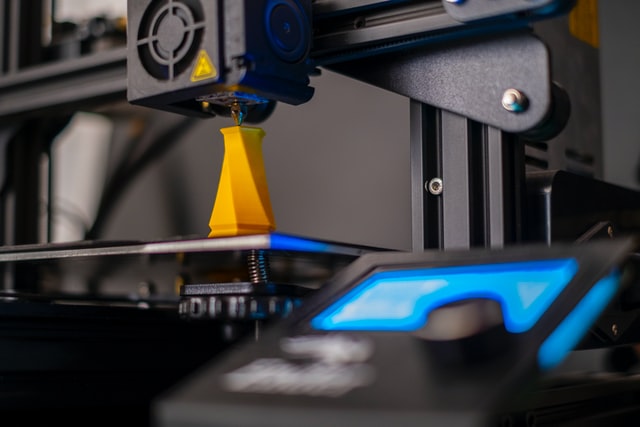There is no question that 3D printing is revolutionizing how products are designed and manufactured. While this technology, also referred to as Additive Manufacturing, is still in its early stages, many industries including medical, automotive, manufacturing, energy, and aerospace – just to name a few – stand to benefit enormously from this disruptive technology.
But the target market for 3D printing isn’t just limited to businesses. It also includes consumers and hobbyists. And it can benefit not just large businesses, but small businesses stand to benefit equally from it.
In this article, we will study the target market for 3D printing by analyzing why both individuals and businesses are turning to this revolutionary technology.
Market Segmentation: Understanding the Target Market for 3D Printing
The most apparent segments of the target market for 3D printing are consumers and businesses. However, a less obvious but more practical form of segmentation is based on customer needs.
In needs-based segmentation, we analyze the need that people or organizations have in buying and using a 3D printer. We answer the question “Why?”. We understand the market’s motivation to spend money. This gives us insights like no other form of market segmentation.
With needs-based segmentation, the target market for 3D printing can be divided into the following customer segments:
- Businesses that need to prototype products quickly
- Businesses that make customized or personalized products
- Businesses that need to create parts or products on-demand
- Companies that make prosthetic body parts or implants
- Hobbyists who want to manufacture objects at home
- Entrepreneurs in need of quick prototypes as proofs of concept
Let’s look at each of these segments one by one.
1. Businesses that need to prototype products quickly
The time saved by using a 3D printer to create prototypes is significant. In the past, organizations would have to outsource the creation of prototypes to an OEM or ODM and that can take anywhere from a few weeks to many months. This not only incurs high costs but also delays the entire product development process.
With 3D printers, organizations can create prototypes in-house and at a fraction of the cost. This is especially beneficial for small businesses and startups that have limited budgets.
When businesses cannot afford 3D printers, they can also use online services such as Xometry or Sculpteo which offer on-demand printing.
2. Businesses that need customized or personalized products
Another target market for 3D printers is organizations that require customized or personalized products. With traditional manufacturing, it can be expensive and time-consuming to create products that are not mass-produced.
However, with 3D printers, organizations can quickly and easily create products that are customized or personalized for each customer. This is especially beneficial for businesses that deal with customers who have unique needs or wants.
3. Businesses that need to create parts or products on-demand
Another target market for 3D printing is organizations that need to create parts or products on-demand. This is especially beneficial for businesses that have a high demand for their products but cannot keep up with the demand using traditional manufacturing methods.
With a 3D printer, businesses can print parts or products as needed which helps them limit inventory issues and keeps their customers happy.
However, note that 3D printing can be time-consuming and may not be suited for all products, and may not completely eliminate the need for inventory.
4. Companies that make prosthetic body parts or implants
3D printing is becoming increasingly common in the medical field. One target market for 3D printing includes companies that make prosthetic body parts or implants.
With traditional manufacturing methods, it can be difficult to create customized prosthetics or implants that fit each individual patient perfectly. However, with the right 3D printer, companies can create prosthetics or implants that are customized to each patient’s unique needs.
This is especially beneficial for patients who have difficult-to-fit body types or who need a unique prosthetic or implant.
5. Hobbyists who want to manufacture objects at home
In addition to businesses, the target market for printing includes individuals and/or hobbyists who want to create personalized or customized products. This could be anything from a custom-made piece of jewelry to a model of a car.
With 3D printers, individuals have the ability to design and create products that are completely unique and personal to them.
6. Entrepreneurs in need of quick prototypes as proofs of concept
In the past, entrepreneurs used to come up with great ideas only to struggle with how to bring their vision to life. With 3D printers, entrepreneurs can create prototypes of their products quickly and easily.
This is especially beneficial for entrepreneurs who are trying to raise money for their new ventures as it can help them to show potential investors what their product will look like without having to resort to drawings or 3D simulations.
Summary
3D printing is a technology that is revolutionizing how products are conceived, designed, prototyped and manufactured. The most avid users of 3D printing technology are businesses. Businesses that need to quickly build prototypes of new products have always been the earliest users of 3D printing.
Similarly, businesses that need to build customized products or products that are personalized for each client have also been able to benefit from 3D printing. Businesses have also turned to 3D printing to have parts and components available on demand. This has reduced their reliance on suppliers and reduced the dangers of inventories.
The target market for 3D printing is not limited to businesses but also includes consumers. Individuals and hobbyists use 3D printing to create objects and parts they need for their personal use. Entrepreneurs often use 3D printing to build prototypes or proofs-of-concept of their ideas or products to raise funds for their businesses.
In conclusion, 3D printing is a revolutionary technology that is benefiting businesses and consumers alike by providing a quick, easy and affordable way to create customized products.

